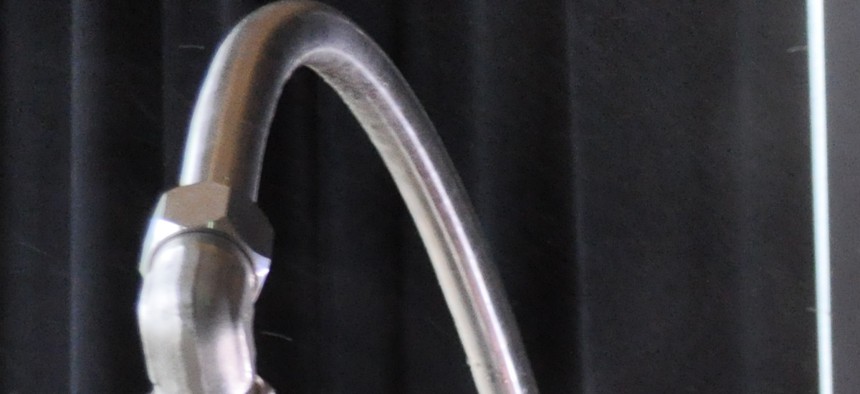3-D Printing Could Transform NASA

Rocket injector assembly built using additive manufacturing technology is hot-fire tested at NASA's Glenn Research Center. NASA Glenn Research Center
Using the technique to produce a fuel injector, officials cut costs by 70 percent.
3-D printing represents a potential game changer for NASA and the US space program. In June, a 3-D printer passed a series of microgravity tests, paving the way for use on the international space station next year. Now, NASA has announced that it successfully tested its first rocket engine part made using additive manufacturing, or 3-D printing.
NASA and contractor Aeroject Rocketdyne used a custom 3-D printing technique to create the “heart” of a rocket engine: the fuel injector. The injector successfully withstood several hot-fire tests of liquid oxygen and gaseous hydrogen.
Typically, fuel injectors take more than year to produce and rank among a rocket’s most expensive components. This new technique allows the fuel injector to be produced in less than four months and with a 70 percent reduction in cost.
Jeff Hayes, Aerojet Rocketdyne’s 3-D printing program manager, said in a statement that successful testing of the fuel injector represents an evolution for 3-D printing beyond the creation of simple brackets and less critical hardware. “The injector is the heart of a rocket engine and represents a large portion of the resulting cost of these systems,” he said. “Today we have the results of a fully [3-D printed] rocket injector with a demonstration in a relevant environment.”
NASA's Glenn Research Center in Cleveland conducted the successful tests in partnership with the Air Force Research Laboratory at Edwards Air Force Base.
"Hot fire testing the injector as part of a rocket engine is a significant accomplishment in maturing [3-D printing] for use in rocket engines," said Carol Tolbert, manager of the Manufacturing Innovation Project at the Glenn Research Center. "These successful tests let us know that we are ready to move on to demonstrate the feasibility of developing full-size, additively manufactured parts."
The Manufacturing Innovation Project is supported by the Game Changing Technology Program in NASA's Space Technology Mission Directorate, which is developing hardware for use in NASA's future missions.
NEXT STORY: Japanese Drones Hit Middle America in WWII



